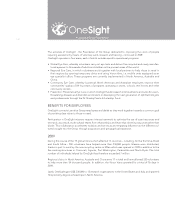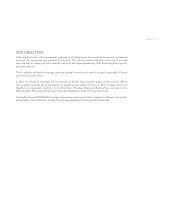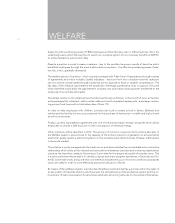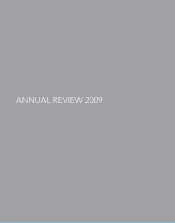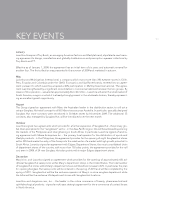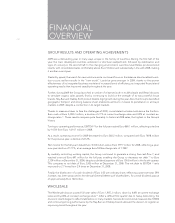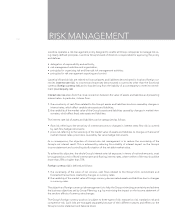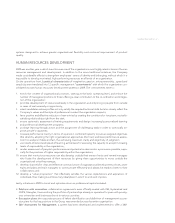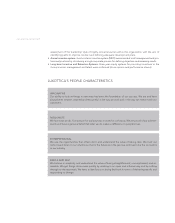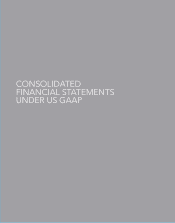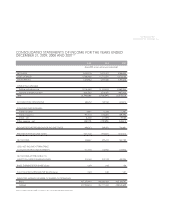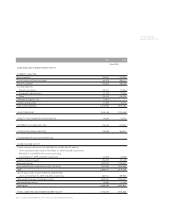LensCrafters 2009 Annual Report Download - page 46
Download and view the complete annual report
Please find page 46 of the 2009 LensCrafters annual report below. You can navigate through the pages in the report by either clicking on the pages listed below, or by using the keyword search tool below to find specific information within the annual report.
> 44 RISK MANAGEMENT
Luxottica operates a risk management policy designed to enable all Group companies to manage risk us-
ing clearly defi ned principles. Luxottica Group’s board of directors is responsible for approving this policy
and defi nes:
• delegation of responsibility and authority;
• risk management activities and organization;
• principles for organizing risk and financial risk management activities;
• principles for risk management reporting and control.
Luxottica’s fi nancial risks are related to fi nancial assets and liabilities denominated in local and foreign cur-
rencies (interest rate risk), to incomes and expenses denominated in currencies other than the functional
currency (foreign currency risk) and to loss deriving from the inability of a counterparty to meet its commit-
ment (counterparty risk)
Interest rate risk arises from the close connection between the value of assets and liabilities and prevailing
interest rates. In particular, it stems from:
1. the uncertainty of cash flows related to the Group’s assets and liabilities structure caused by changes in
interest rates, which affect variable rate assets and liabilities;
2. the variability of the market value of the Group’s assets and liabilities caused by changes in market inter-
est rates, which affect fixed rate assets and liabilities.
The interest rate risk of assets and liabilities can be categorized as follows:
• flow risk, referring to the sensitivity of interest amounts to changes in interest rates; flow risk is covered
by cash flow hedge instruments;
• price risk, referring to the sensitivity of the market value of assets and liabilities to changes in the level of
market interest rates; price risk is covered by fair value hedge instruments.
As a consequence, the objective of interest rate risk management is to reduce the uncertainty of the
Group’s net interest result. This is achieved by reducing the volatility of interest impact on the Group’s
income statement and controlling the fl uctuation of the net debt market value.
To achieve this objective, the whole Group’s interest rate risk exposure, in terms of notional amounts, must
be organized as a mix of fi xed interest rates and fl oating interest rates, where neither of the two should be
lower than 25% or higher than 75%.
Foreign currency risk is defi ned as follows:
1. the uncertainty of the value of net income, cash flows related to the Group’s firm commitment and
forecasted transactions created by changes in currency rates;
2. the variability of the market value of foreign-currency-denominated assets and liabilities due to changes
in currency rates.
The objective of foreign currency risk management is to help the Group minimizing uncertainty and achieve
the business objectives set by Group Planning, e.g. by minimizing the impact on the income statement of
the random effects of currency rate changes.
The Group’s foreign currency position is subject to three types of risk: transaction risk, translation risk and
competitive risk. Such risks are managed separately because of their different natures and effects on the
Group’s income statement and balance sheet.


